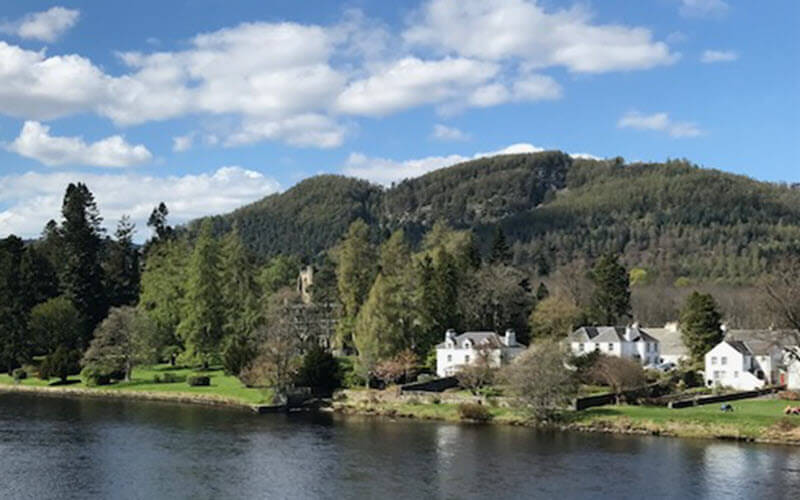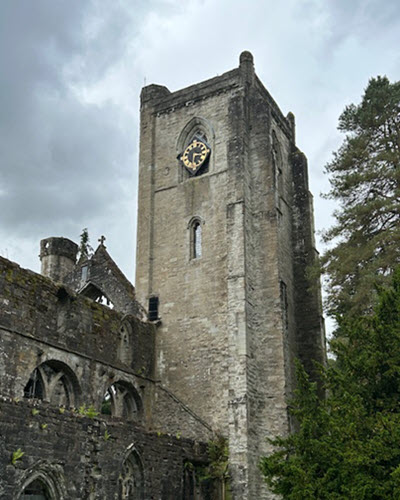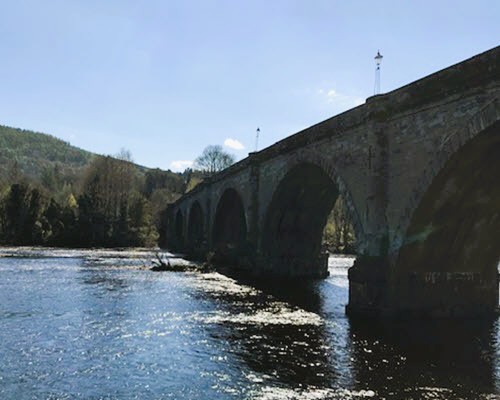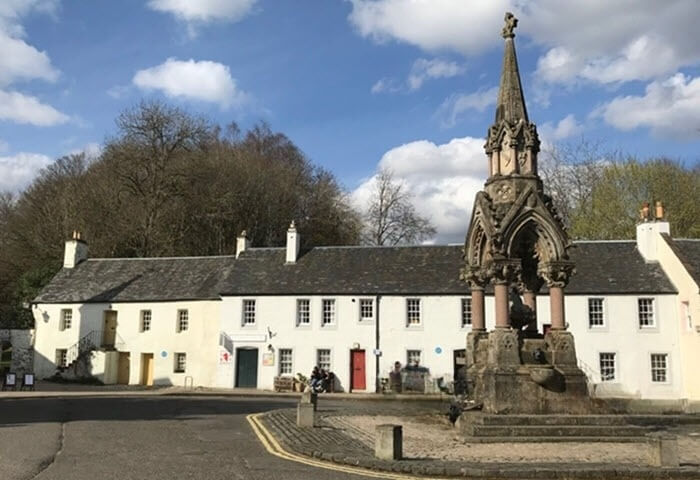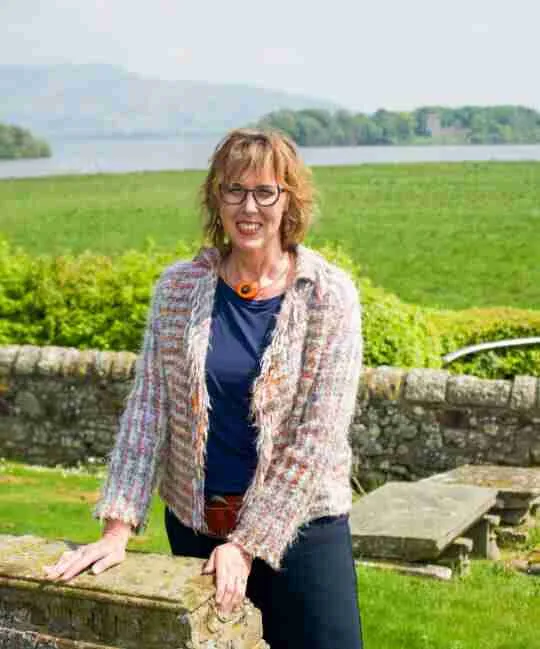Dunkeld town is in the parish of Dunkeld and Dowally in Perth and Kinross, which was historically part of Perthshire until the 19th century. Described as the Gateway to the Highlands, it is a small town located on the banks of the River Tay.
As part of my series on Scottish parishes, this article looks at the history of Dunkeld town and the records that can help with family history research.
Early History of Dunkeld Town
In the 9th century, Kenneth MacAlpin, considered as the founder of Scotland, established a monastery there. According to the Chronicles of the Kings of Alba, he moved the relics of St Columba from Iona to Dunkeld because Viking raids repeatedly threatened the small island community.
Consequently, Dunkeld became an important centre of Christianity in early medieval Scotland.
Dunkeld Cathedral
Built between the 13th and 16th centuries, Dunkeld Cathedral overlooks the town. Although partly ruined after centuries of conflict and neglect, the choir remains in use as the parish church.
For family historians, the cathedral grounds are especially important: monumental inscriptions and gravestones can provide clues when tracing ancestors.
The Battle of Dunkeld (1689)
Dunkeld town was the scene of a key battle during the Jacobite rising of 1689. Following the victory of the Jacobites at Killiecrankie, Highland clans marched towards Dunkeld and attacked the town. Defending the town was the newly raised Cameronian Regiment. They were Presbyterian Covenanters commanded by the Earl of Angus who supported the new government of William and Mary.
The Cameronians fortified themselves in the cathedral and nearby houses, and a brutal day-long battle followed. Much of the town was burned, and casualties were heavy on both sides. However, the Cameronians held their ground, and the Jacobite forces were forced to withdraw.
General Wade’s Military Roads
After the Jacobite rising of 1715, General George Wade was tasked with building military roads to secure government control of the Highlands. Between 1725 and 1737, his soldiers constructed more than 250 miles of road and dozens of bridges. One of these routes ran through Dunkeld linking Perth to the north and making the town a strategic crossing point.
Later, in the 19th century, civil engineer Thomas Telford improved many of Wade’s original routes.
Dunkeld Bridge by Thomas Telford
Before its construction, crossing the Tay at Dunkeld was done by ferry, which could be dangerous or unreliable during bad weather.
The bridge was built in 1809 and it was designed by Thomas Telford (1757–1834). He was born in Westerkirk, Dumfriesshire, and was the son of a shepherd.
The bridge has seven arches spanning the River Tay, with the central arch stretching 90 feet. Today, Telford’s bridge is still in use, carrying traffic into Dunkeld.
A School for Girls in Dunkeld Town (1853)
In 1853, the Duchess of Atholl, Anne Murray, founded the Duchess Anne School for Girls in Dunkeld. Built in a Tudor-Gothic style in the main square opposite the Cross , the school provided literacy and practical skills ensuring girls were equipped for work as well as home life.
When it closed in 1898, the pupils were absorbed into the Royal School of Dunkeld. The building today continues to serve the community and is often used for exhibitions.
Dunkeld Town Archives and Records
For those tracing their family history, Dunkeld is not only a historic site but also a place where records survive. The Chapter House Museum beside the old Duchess Ann School for Girls preserves artefacts and archival material relating to the town and parish.
More extensive records are held by Perth and Kinross Archives, including parish registers, kirk session minutes, and estate papers from the Atholl estates.
Dunkeld Today
Modern Dunkeld is a picturesque town with beautifully preserved 18th-century buildings around The Cross and Cathedral Street. Visitors can visit the cathedral, the River Tay, and the nearby Hermitage with its ancient trees and waterfalls.
For family historians, Dunkeld is more than a scenic stop — it is a place where history, ancestry, and heritage come together.
Good luck with your research.
Until my next post, haste ye back.
Enjoyed this post?
Keep up-to-date with my latest posts and tips below:
We hate SPAM & promise to keep your details safe.
Image Credits: Sarah Smith
You may also like...
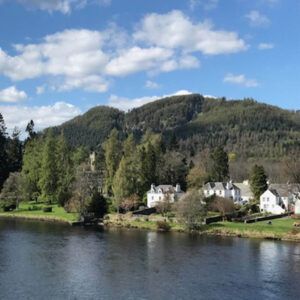
My Ancestor was from Dunkeld Town
Dunkeld town, known as the Gateway to the Highlands, is located on the banks of the River Tay beside Thomas Telford’s bridge.
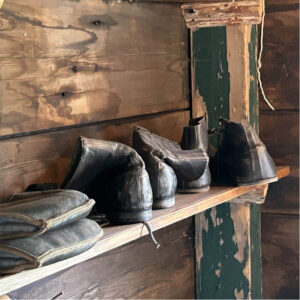
What is a Cordwainer?
A cordwainer is an old term for shoemaker. In Scotland, known as cordiners, they appear in many historical records and trade directories.
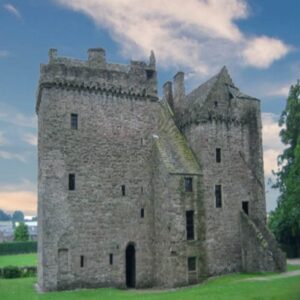
The Ruthven Surname: Origins, History and Meaning
The Ruthven surname (pronounced Riven) is toponymic which means it is a place-name. It comes from the lands of Ruthven in Perthshire.
